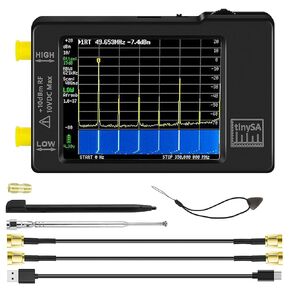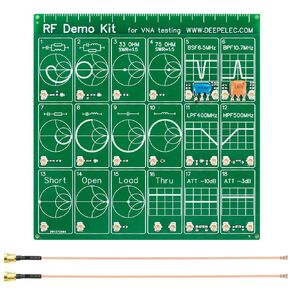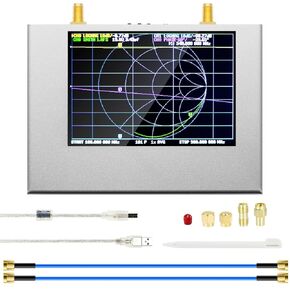- Shopping, made easy.
- /
- Get the app!
Compared to NanoVNA V2 PLUS4, the V2 PLUS4 Pro has the same appearance as the plus4, with a few more options in the menu. Update:
1. Hardware added bandwidth adjustment function;
2. It can measure narrowband devices, such as crystal oscillators;
3. The maximum scan speed is faster than before, the default parameter is 0.16 seconds per scan, instead of 0.25 seconds
 Portable tinysa Spectrum Analyzer - AURSINC V0.3.1 Hand Held Frequency Analyzer | 100kHz to 960MHz MF/HF/VHF UHF Input | ESD Protected Function & 2.8 inch Touchscreen | Signal Generator
KWD 26
Portable tinysa Spectrum Analyzer - AURSINC V0.3.1 Hand Held Frequency Analyzer | 100kHz to 960MHz MF/HF/VHF UHF Input | ESD Protected Function & 2.8 inch Touchscreen | Signal Generator
KWD 26
 Upgraded AURSINC NanoVNA-H4 V4.3 Vector Network Analyzer 10KHz-1.5GHz HF VHF UHF 4'' Portable Antenna Analyzer Measuring S Parameters, Voltage Standing Wave Ratio, Phase, Delay, Smith Chart
KWD 4
Upgraded AURSINC NanoVNA-H4 V4.3 Vector Network Analyzer 10KHz-1.5GHz HF VHF UHF 4'' Portable Antenna Analyzer Measuring S Parameters, Voltage Standing Wave Ratio, Phase, Delay, Smith Chart
KWD 4
 AURSINC Filter Attenuator, RF Demo Kit NanoVNA RF Tester Board for NanoVNA-H NanoVNA-F Vector Network Analyzer Kits
KWD 7
AURSINC Filter Attenuator, RF Demo Kit NanoVNA RF Tester Board for NanoVNA-H NanoVNA-F Vector Network Analyzer Kits
KWD 7
 Upgraded NanoVNA V2 PLUS4 Vector Network Analyzer 50kHz-4GHz, AURSINC 4'' Antenna Analyzer HF VHF UHF Measuring S Parameters, Voltage Standing Wave Ratio, Phase Delay, Smith Chart with 3200mAh Battery
KWD 90.500
Upgraded NanoVNA V2 PLUS4 Vector Network Analyzer 50kHz-4GHz, AURSINC 4'' Antenna Analyzer HF VHF UHF Measuring S Parameters, Voltage Standing Wave Ratio, Phase Delay, Smith Chart with 3200mAh Battery
KWD 90.500